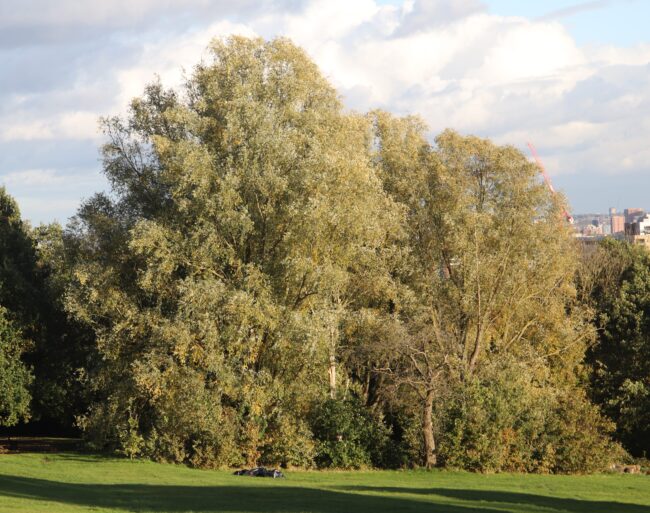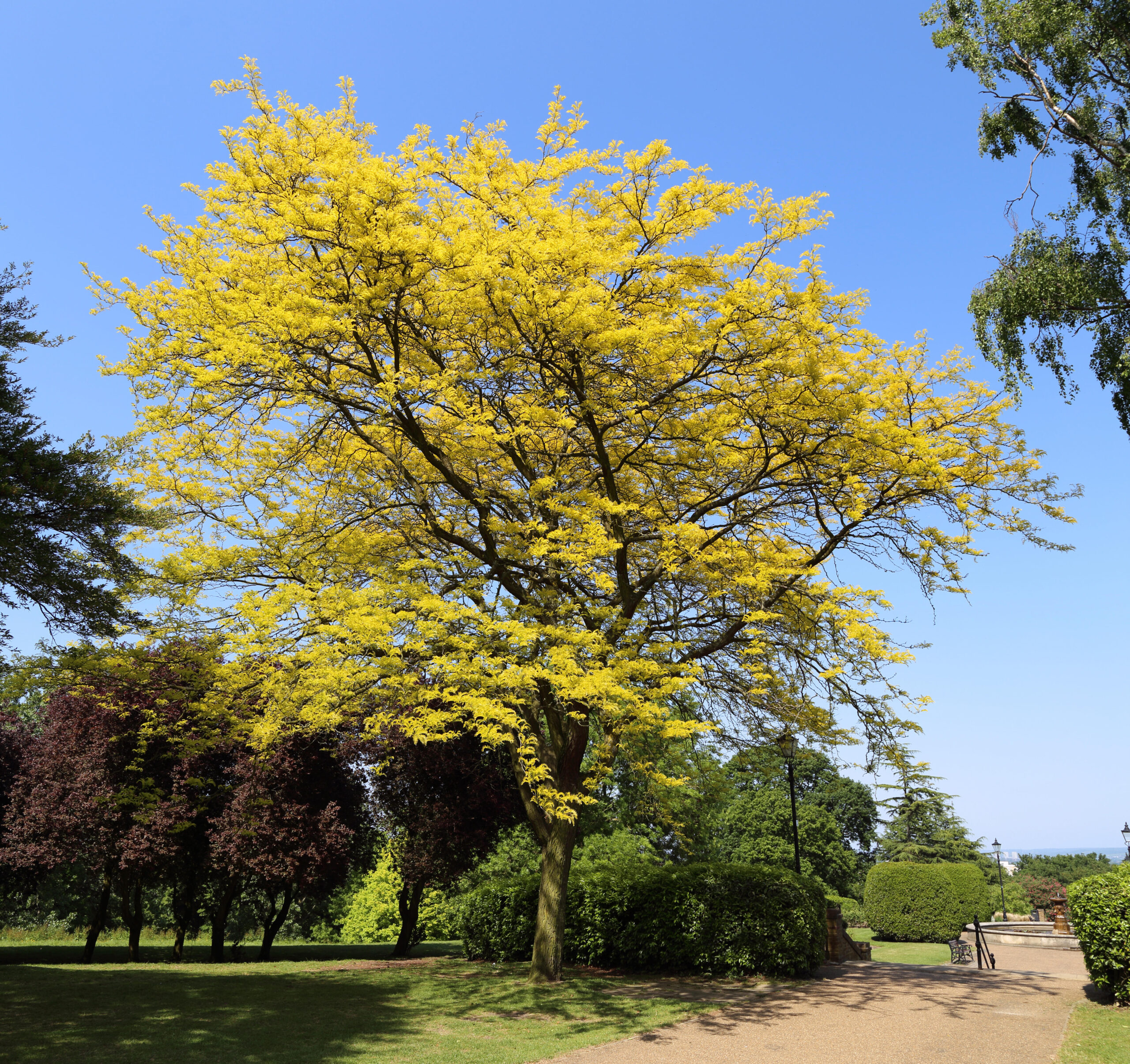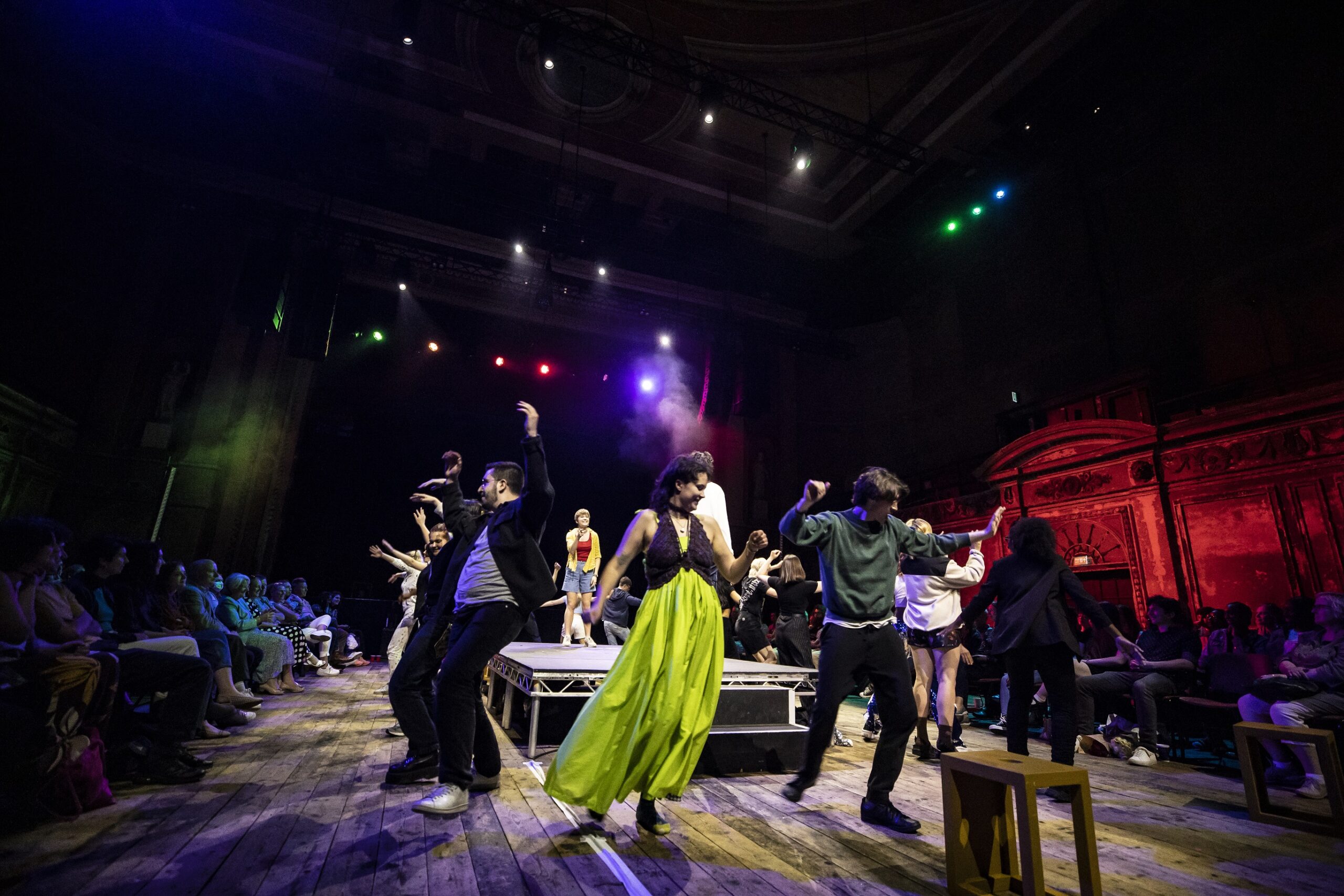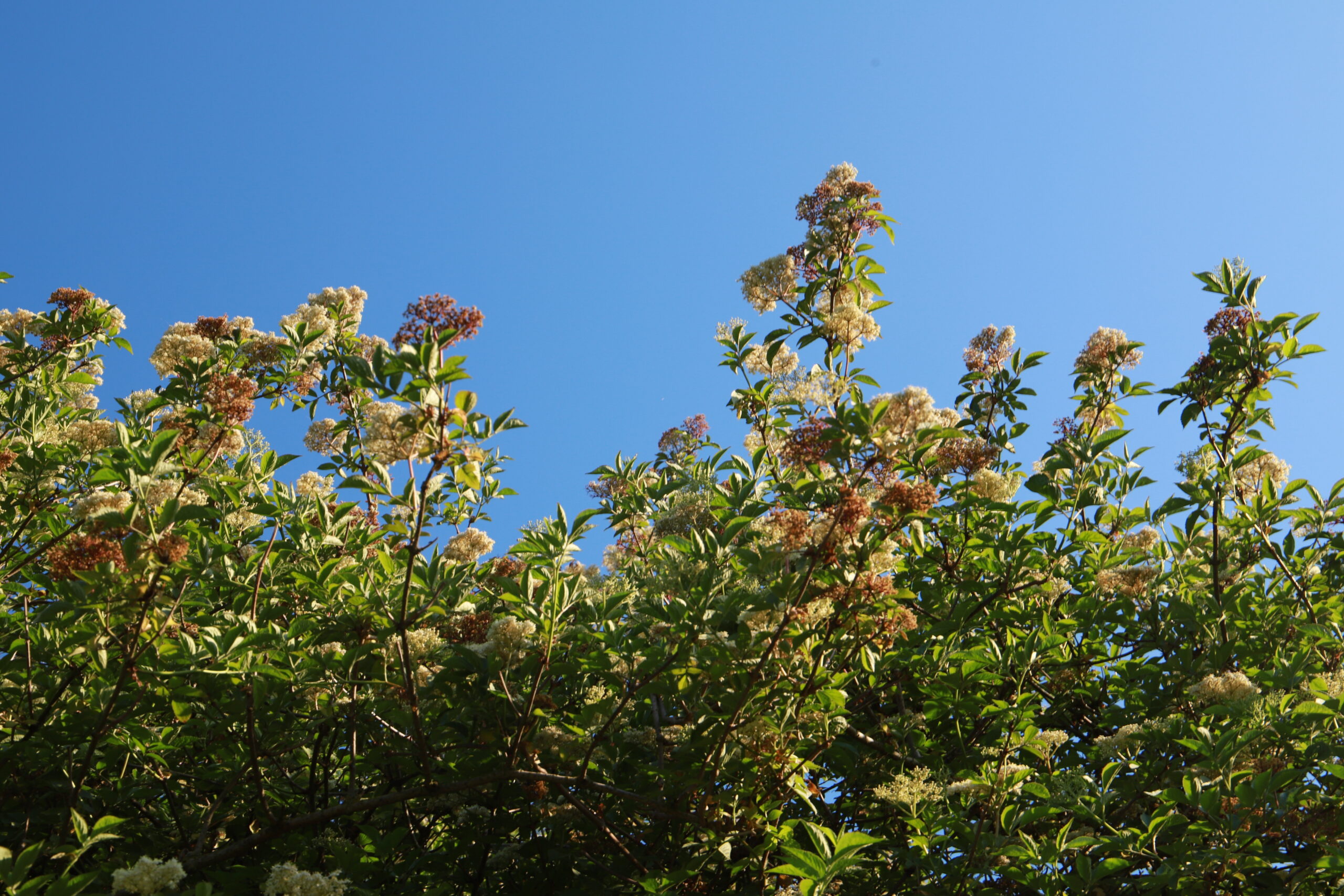Stephen Middleton from the Friends of Alexandra Park introduces us to his selection for August’s Tree of the Month…
Shimmery, silvery foliage on a large and impressive tree. This is our August Tree of the Month, the White Willow (Salix alba).
Walk down the eastern side of the South Slope from the BBC Tower alongside the Pitch and Putt and at the bottom facing you will be the white willow. It is on the edge of a small copse of trees including two other trees of the same species.
The white appearance of these trees, given in its name, is due to the fine hairs especially on the underside of the leaves. The scientific name also means white willow with salix being the latin for willow and alba meaning white in the same language.
Each tree is either male or female with separate flowers on separate trees. Look out for them in early spring.
The leaves of the white willow are quite long and narrow and only slightly serrated. Look carefully and you may see some raised red spots on some of the leaves. These are galls caused by a small mite (Aculus tetanothrix) which induces the tree to produce these structures to protect itself from predators.
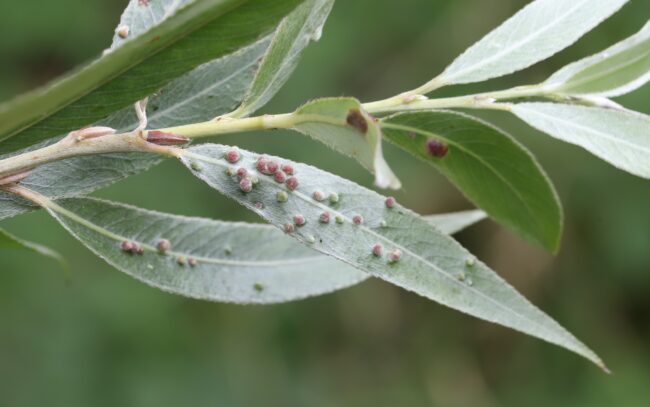
The bark of our tree of the month is ridged and furrowed. Go up to the tree and feel it. Within the bark is the chemical, salicin, from which can be produced acetylsalicylic acid or as it is more commonly known, aspirin.
White willow is quite a large tree and is native to England and to most of Europe as well as parts of north Africa and western Asia. It grows up to 25m tall or sometimes a little higher.
If you think of willows you may well picture them growing beside a river or stream. This species of willow is no exception and is at its happiest growing in damp places including along riversides.
The wood from the tree is quite hard and flexible and has been used in many applications including basket weaving and for the handles of tools. Charcoal from white willows was also a key component of gunpowder. One subspecies of this tree is particularly known for its use in making cricket bats.
Another place in the park to find these trees is on the side of the boating lake with several examples leaning out over the water.
